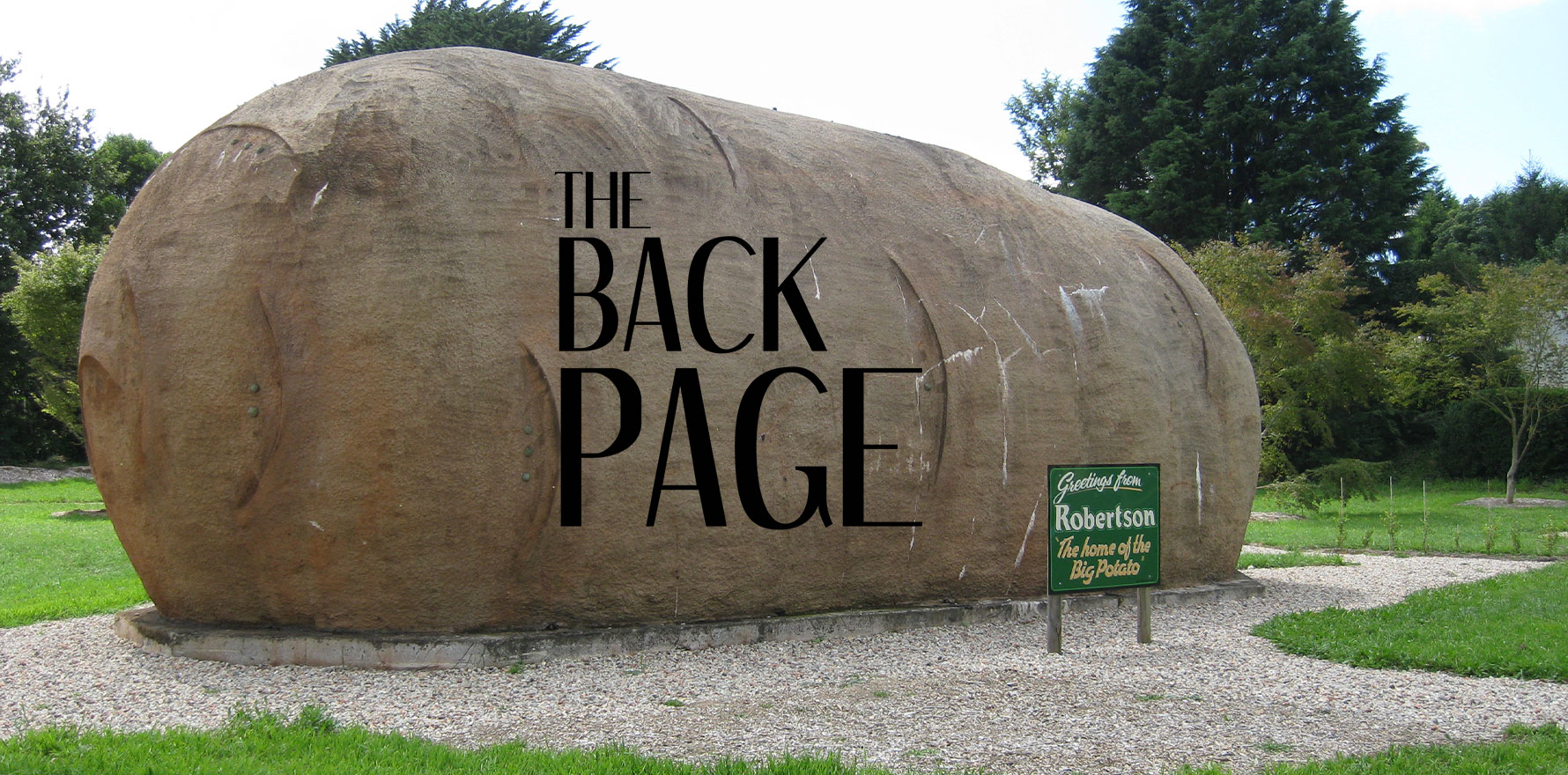Why bigger can be better when it comes growing spuds.
High on the list of things your Back Page correspondent doesn’t fully understand is the Australian penchant for building giant replicas of mundane objects.
The preponderance of Big bananas, prawns, pineapples, oysters, rocking horses and so forth scattered across this wide brown land have been known to prompt ruminations on the sanity of humanity.
So imagine our dismay when we happened upon reports of a research project to create, of all things, a giant potato.
Thankfully, the rationale behind this monstrous murphy is not to separate bored travellers from the contents of their bank account. Rather, there is a more noble purpose behind the drive to grow tubbier tubers: helping end world hunger.
Ever since indigenous Mexicans began fiddling about with wild grasses about 10,000 years ago to create what we now know as corn on the cob, humans have been manipulating genes to grow better grub. And now with the rapid advancement of genetic science and technology, we are getting really good at it.
So how exactly does one supersize the humble spud? By injecting it with a human fat-regulating protein, of course.
Scientists at the University of Chicago have used the protein, called FTO, to alter the genetic code of the potato so that the tuber produced extra proteins, resulting potatoes that grew to nearly twice the size of regular taters.
To their credit, the boffins behind this experiment admit they were quite prepared for things to go horribly wrong.
“It [was] really a bold and bizarre idea.To be honest, we were probably expecting some catastrophic effects,” Chuan He, a chemist at the university and co-author of the study, was quoted as saying.
Since potatoes don’t usually have a fat-regulating protein, the scientists were unsure of the likely outcome of their experiment. Killing the potato plant completely, or having it grow uncontrollably and alarmingly large, were possible options.
Pleasingly, a Day of The Triffids-like scenario did not occur. Instead, what transpired were happy, healthy potato plants with twice the yield of unmodified ones.
While it may be many years, if at all, before the gargantuan tubers start appearing at the supermarket, the thinking behind the experiment is sound.
Using technology to allow farmers to grow larger, higher-yielding crops on the same amount of agricultural land will not only help address food shortages, it will also help offset the impact of agriculture on our planet’s fragile climate.
And that’s not small potatoes.
If you see something that tickles your mental tastebuds, email felicity@medicalrepublic.com.au.


